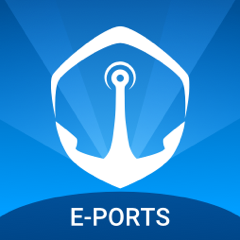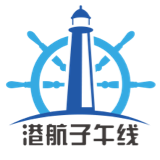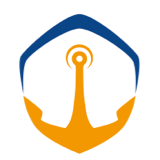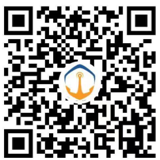Digitization: Future of Teleworking and Shipping Services
About 80% of the international trade is performed by ships. As an important engine of global supply chain, China occupies 7 of the world’s top 10 container ports and has become the main source of goods for the shipping industry. By February 2020, the epidemic has hit the global trade, logistics and supply. Oil, natural gas, dry bulk are all not spared.
As a third-party B2B platform, E-PORTS has always been endeavoring to provide both online and offline global shipping services, so it is more keenly aware of the importance of information construction. During the epidemic, E-PORTS provides solutions of ship arrival, cargo handling, crew services and other services for ship managers and operators through its co-ordination with global port agents and service providers.
Shortly after the WHO declared the coronavirus outbreak a Public Health Emergency of International Concern (PHEIC) on January 30, ports around the world successively adopted measures of ship berthing and quarantine, posing huge challenges to ships traveling to and from China. According to the feedback from platform customers and agents, E-PORTS, joined with its product and IT departments, launched the Global Port Restrictions Map and the Chinese Port Service Assistance Platform at first time. Through its website, WeChat account and mail, E-PORTS informed customers of these two services. The data is updated on a daily basis based on the information collected from customers and agents thanks to big data and information digitization. Meanwhile, it did utmost to solve problems at domestic ports. For example, a crew member could not be properly settled after disembarking from the ship. Thanks to the efforts of the local agent and E-PORTS, he was finally able to check in the hotel.
In this fight against the COVID-19, more innovative and revolutionary business models and technology have come into sight, including the teleworking in the shipping industry. E-PORTS believes that with the promotion of smart shipping, teleworking has become one of the development trends of working modes, helping shipping enterprises reduce costs and increase efficiency.

A great product must solve pain points of the shipping industry, rather than simply moving the business online. Deeply rooted in both the shipping industry and the Internet industry, E-PORTS has the capability to bring shipping services to online platform and help enterprises to realize teleworking. Its cloud-based shipping service platform, the Shipping Agency Desk, provides real-time and efficient whole-process business connection for ship managers and agents, realizing high sharing and coordination of information.
In the light of the weakness of the traditional shipping industry, it uses information technology and standardized nodes to help shipping companies break “islands of information” and realize the interconnection.
In terms of teleworking, administer can set different permissions according to departments, positions and roles on the platform to realize collaborative office covering operation, IT and finance, which is convenient for companies to communicate, issue orders, request decisions, share information.
In addition, PC+APP also provide more possibilities for shipping services. For ship managers, they can track the latest service process and share information with multiple roles in a timely manner. For agents, the APP greatly facilitates the update of service nodes. They can also receive changes in requirements and assignment of tasks at any time.
疫情之下:远程办公+航务服务的未来之路在何方?数字化助力升级
一场忽如其来的新冠疫情急速改变了中国航运业,也为全球航运市场增添了更大的不确定性。国内港航行业在吞吐量与运量的双双下跌中展露无遗,全球的海运公司也正承受着产量下降带来的经济冲击,多家船运公司已减少海运船只的数量,疫情正在阻塞全球贸易的动脉。
全球货物贸易80%的体量都是通过海洋运输,而在全球十大集装箱港口中,中国占据了7个,已经成为海运业的主要货源。作为亚洲内部以及全球供应链的重要推动者,到2020年2月,新冠疫情对世界范围内贸易物流供应造成历史性的破坏。全球航运从从石油和天然气到干散货均都无一幸免。
相比于2003年SARS时期,市场普遍认为此次疫情的影响会大于2003年的SARS,主要原因就是中国在全球航运市场的影响力更广更深远:中国目前占到全球海运进口总量的22%较之2003年规模增加了5倍多;中国船厂的交船量在全球占比为33%,2003年时为 12%以及承接了全球大部分修船业务;2019年中国大陆港口被全球船队挂靠共计约280000次,占全球港口挂靠数量的7%,其中散货船在中国水域的时间占全球活动时间的份额达到10%。
种种数据来看,中国航运市场在这十多年间经历了突飞猛进的发展,无论是助推全球50%增长的海运贸易,还是占据全球造船产能最大份额的中国船厂,以及不断扩张仅次于希腊的船队规模...所以此次新冠疫情所影响的早已不仅是一个国家,或局部地区的航运及贸易市场。
距离疫情爆发已过去一月有余,尽管国内的蔓延趋势有所好转,但全球范围内的上升情况并不容松懈,与船舶服务相关的各类业务承压更大。港口作业延迟、船舶挂靠问题、船员换班问题、新造床和修船业务、甚至是一些船只成了漂浮的隔离区,种种挑战令大家认真思考,如何能令航运企业在面临突发事件时也尽可能确保运输效率?而面对此次疫情考验,加速推动航运智能化与数字化的技术开发与实践运用成了迫在眉睫的话题。
E-PORTS作为一家定位于第三方B2B全球航运服务链管理平台,一直以来致力于提供线上线下融合的全球航运服务,因此更加敏锐地觉察到信息化建设的重要性。疫情期间,为了保障航运企业任何情况下都能够高效完成物流运输服务,包括中国船舶以及国外挂靠中国港口的船舶可以顺利完成港口事务,E-PORTS通过信息自动化技术的运用,智能协调全球港口代理服务商为船舶提供及时的靠港、装卸货、船员服务、船舶服务等方案,以减轻船舶经营管理企业的运营压力。
早在2月上旬,在全国疫情爆发情况最为严重的关键时刻,也是世界卫生组织宣布中国疫情构成PHEIC后不久,全球各国的港口相继出台了宽严不一的船舶靠港和隔离措施,给往来中国的船舶带来了巨大运输挑战。E-PORTS根据线上平台客户遇到的实际问题,以及线下代理反馈的种种困难,第一时间联合产品与技术部门,在研究了多种呈现方式并考虑到快速投入使用的问题,上线了PC和APP版的全球港口服务限制动态图和中国港口服务协助平台。E-PORTS通过官网、公众号、以及邮件等方式,将这两项特别的协助服务告知客户,并通过大数据、信息数字化手段,将我们从客户和代理服务商处搜集到的最新信息汇整到动态地图中并进行每日的实时更新。而面对国内港口遇到的实际问题,更是身体力行地尽一切可能帮助解决。比如一位来自某省的船员在下船后无法得到妥善安置,经过E-PORTS当地港口代理的多方努力,最终得以顺利入住酒店。
有理由相信,在所有人共同一心的努力之下疫情抗击终会取得胜利,但在这场席卷而来的暴风过后,更多具有创新和革命性的业务模式、技术力量被加速催化进入了人们视线中。航运业的远程办公无疑就是其中一项。E-PORTS同时也相信,随着智能航运发展的不断大力提倡,远程办公本身也就是航运企业的未来发展趋势之一。无论是外部客观环境,还是传统航运业的内部升级,这都是帮助航运企业远程办公都是降本增效,提升整体水平的重要举措。
那么接下来的问题就是,航运服务真的能实现远程办公吗?一个好的航运远程办公产品究竟长什么样?
一个实用、好用的产品必然要深切解决航运企业的痛点,而非简单地把业务“搬家”到线上。而E-PORTS无论在传统航运业还是互联网行业都扎根很深,这是能将航运服务成功升级到线上,以智能化、数字化帮助企业进行远程办公在内的各项服务的关键因素。其研发的以数字化为驱动的国际代理船舶业务云服务平台,为船舶经营管理方和船舶代理方提供实时、高效的全过程业务对接,实现全程化、可视化、一体化信息可管控的高度共享和协同。
相较于传统航运业,尤其是船代行业存在的短板,E-PORTS的信息自动化技术与标准化节点在平台中的运用,帮助航运企业打破信息孤岛,实现港航企业间的互通互联。从根本上提高航运服务交易的管理效率,降低船舶经营管理成本。
针对远程办公而言,企业内部用户可在平台上根据不同部门、职位、角色设置不同使用权限,实现操作、技术、财务等多部门多角色的协同办公,方便企业内部高效及时地沟通信息、传达命令、请求决策、共享和复用知识等等诸多协同行为,为客户实现扁平化工作协同管理。
此外,PC+APP的联动方式也为航运服务提供了更多可能性。对于船舶经营管理方而言,无需被动等待服务反馈,取而代之的是主动查看各项服务进程和与多方角色的信息及时互通。对于内勤人员,APP的使用大大提升了更新服务节点的便捷性,并能够随时接受需求变更和任务委派。








